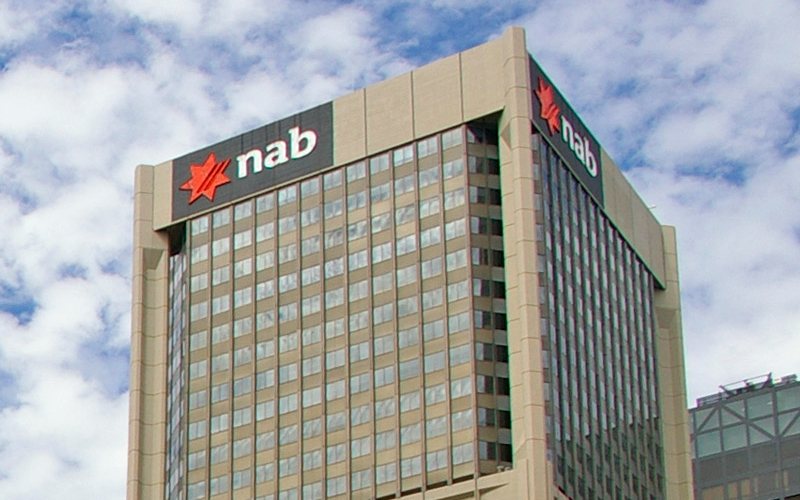Another week, another data set that points to the potential end of cash rate increases, with the unemployment rate hitting 4.1% in January.
For those who have been holding fire on locking on a term deposit, hoping that rates will start to climb again, those hopes appear to grow more grim by the week.
Several more products saw rates slashed this week, although NAB and Macquarie were notable exceptions, boosting returns on select products.
The major banks have lagged well behind smaller outfits for term deposit returns over the past 18 months, but with ANZ and Westpac hiking last week, this gap is tightening.
After a 63 basis point increase to eight month terms this week, the big four now all have a top rate of 4.88% p.a.
This is 32 basis points off the market leaders, which while still significant, is a huge improvement from last year, when the top rates were regularly nearly 100 basis points higher than those on offer at Australia's biggest banks.
Many banks now offer the highest rates on terms less than one year, which is to be expected given that cash rate cuts by the end of the year are widely anticipated.
NAB varies rates by up to 63 bps
| Term length | Deposit size | Payment frequency | Interest rate (Percentage point change) |
| Eight-Nine months | $5,000-$1,999,999 | End of term | 4.88% p.a (+0.63) |
| 10-11 months | $5,000-$1,999,999 | End of term | 4.00% p.a (-0.30) |
| One year | $5,000-$1,999,999 | End of term | 4.70% p.a (-0.10) |
After a 63 basis point increase, NAB joins the other big four banks in offering a top rate of 4.88% p.a on eight month term deposits.
Unsurprisingly, eight months' time is roundabout when the respective economists from each of the majors are predicting rate cuts to begin.
Banks are showing growing reticence to risk being locked in to paying top rates for even a couple of months after the RBA starts the easing cycle.
After the unemployment numbers dropped on Thursday, NAB economist Tapas Strickland, who has tended towards predicting higher rates, said the RBA would likely wait until the February labour force release before drawing any "firm conclusions".
"Some softening in the labour market was expected," he said.
"However, if the lift in the unemployment rate is sustained next month, then that would suggest a softening in the labour market is occurring faster than the RBA’s forecast track, which could give the RBA greater confidence in their forecasts of inflation heading back to the mid-point of the band."
Challenger Bank cuts rates by another 5 bps
| Term length | Deposit size | Payment frequency | Interest rate (Percentage point change) |
| One year | $25,000*-$1,000,000 | End of term | 5.15% p.a (-0.05) |
*$5,000 for existing Challenger customers
A good example of the smaller banks vying for market share in the TD space is Challenger Bank - a few weeks ago it was outright market leader for one year terms at 5.25% p.a.
After a 5 bps cut last week bought Challenger back down level with the likes of Qudos and G&C Mutual at 5.20% p.a, a further cut this week means Challenger no longer offers the highest one year term deposit rate.
However, for six month terms, Challenger continues to sit at the 5.20% p.a, level with Gateway Bank as the highest available in Australia (per Savings.com.au's market research).
Macquarie Bank boosts rates by 5 bps
| Term length | Deposit size | Payment frequency | Interest rate (Percentage point change) |
| Six months | $5,000-$1,000,000 | End of term | 4.80% p.a (+0.05) |
Over the past 18 months or so, strategists at Macquarie Bank have not been very considerate of those who need to write headlines about term deposit rate movements.
It's very rare to see movements from Macquarie that exceed 5 basis points in either direction, and this week was no different with six month terms seeing rates slightly boosted.
Last week, Macquarie cut rates on one year terms to 4.70% p.a, so Macquarie is another institution where six month returns exceed one year, reflecting a shorter-term outlook on rates from the bank or easing concerns about liquidity coverage ratios (LCRs).
The most eye catching rate at Macquarie is arguably for three months, where returns are currently at 4.85% p.a.
Bank of Sydney cuts rates up to 20 bps
| Term length | Deposit size | Payment frequency | Interest rate (Percentage point change) |
| Six months | $1,000-$1,000,000 | End of term | 4.95% p.a (-0.10) |
| Nine months | $1,000-$1,000,000 | End of term | 5.00% p.a (-0.10) |
| 10 months | $1,000-$1,000,000 | End of term | 4.80% p.a (-0.10) |
| 13 months | $1,000-$1,000,000 | End of term | 4.80% p.a (-0.20) |
After more cuts across its range of products from six to 13 month terms, only nine month and one year terms at Bank of Sydney now return 5.00% p.a.
Bank of Sydney hit the highest rate during this cycle at 5.50% p.a. for six-month terms mid last year - which was way back in July 2023 - but it has also been among the most reactive, with prolonged periods of both cuts and hikes depending on economic indicators.
Suncorp cuts rates by 10 bps
| Term length | Deposit size | Payment frequency | Interest rate (Percentage point change) |
| Seven month | $5,000-$99,999 | End of term | 4.75% p.a (-0.10) |
| Seven month | $100,000-$999,999 | End of term | 4.80% p.a (-0.10) |
| One year | $5,000-$99,999 | End of term | 4.85% p.a (-0.10) |
| One year | $100,000-$999,999 | End of term | 4.90% p.a (-0.10) |
Suncorp cut rates across its range of one year and seven-month products this week, taking one year terms away from the 5% p.a. benchmark.
Suncorp customers with more than $1,000,000 to spare for a term deposit can earn an extra 5 bps, while discounted rates are available for more regular interest payments.
Gateway Bank cuts by 5 bps
| Term length | Deposit size | Payment frequency | Interest rate (Percentage point change) |
| One year | $1,000-$1,000,000 | End of term | 5.05% p.a (-0.10) |
While Gateway Bank saw one year terms pegged back this week, it continues to offer 5.20% p.a returns on six month terms, level with Challenger Bank.
Other movers
- Beyond Bank cuts rates up to 20 bps
- Bank First cuts rates 10 bps
- Credit Union SA varies rates up to 100 bps, including a full percentage point increase on five month terms to reach 5% p.a.
Picture from NAB



 Harry O'Sullivan
Harry O'Sullivan

 Denise Raward
Denise Raward
 Dominic Beattie
Dominic Beattie
 William Jolly
William Jolly

